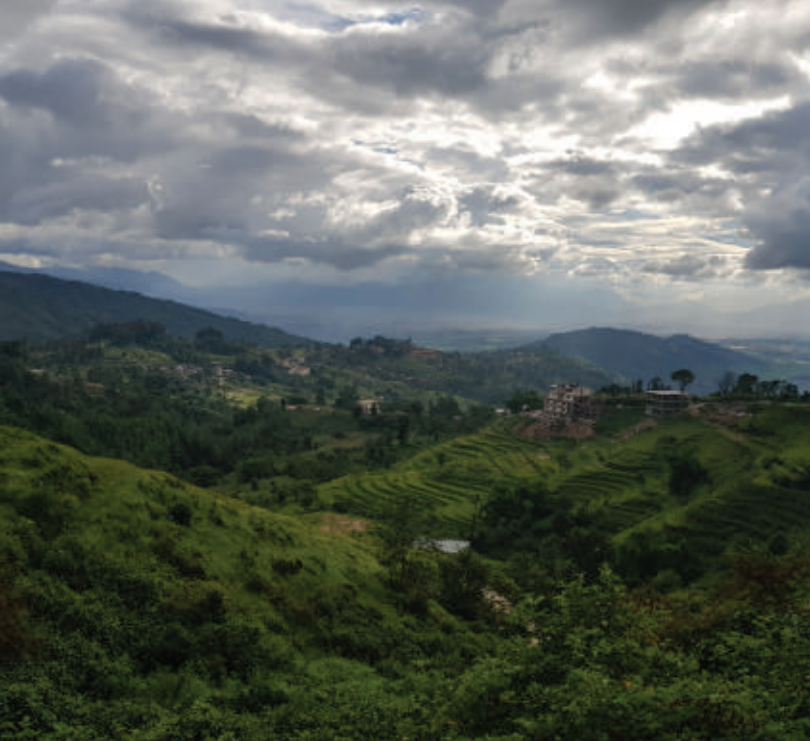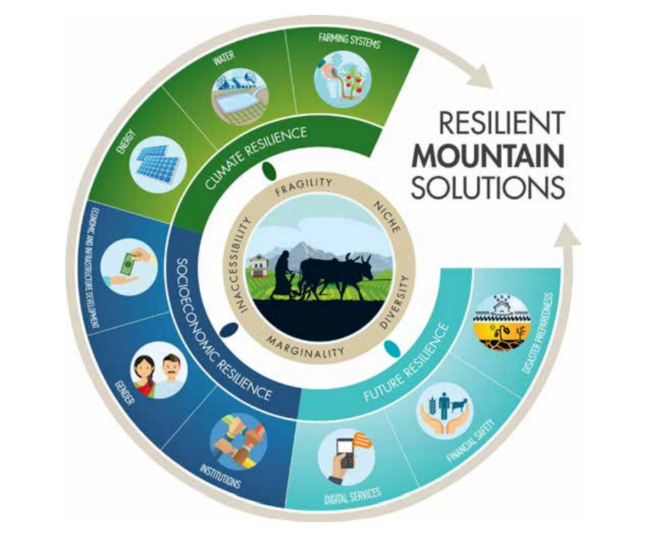Climate Resilience Planning in Mountainous Regions in Nepal

Summary
This policy brief assesses the challenges and opportunities in undertaking local climate mitigation and adaptation actions in Nepal municipalities and makes recommendations for developing and mainstreaming resilience plans. It highlights the ambiguity and lack of clarity of roles between and among government agencies, lack of technical capacity among municipal staffs, and access to finance by using available tools for resilience planning.
*This weADAPT article is an abridged version of the original text, which can be downloaded from the right-hand column. Please access the original text for more detail, research purposes, full references, or to quote text.
Key Messages
- Rapidly urbanising Nepalese cities and towns require to prepare dedicated resilience strategies to address climate change impacts and other socioeconomic challenges.
- Municipalities are the key local level players on climate actions and can make significant contributions to Nepal’s mitigation, adaptation and disaster risk reduction efforts.
- The constitutional transformation of the country from a unitary to a federal structure has provided municipalities with greater opportunities to integrate climate and disaster planning into their annual plans and programmes.
- However, they are facing several challenges in planning, monitoring and implementing climate actions due to lack of technical capacity among municipal staffs, limited financial allocations and lack of clarity on the roles of government agencies in supporting climate actions and disaster risks reduction.
- An effective climate resilience plan must be developed using tools and processes specific to local governments, and that support collaboration among and between all levels of government.
Introduction
Nepal is a nascent, fast-evolving democracy and yet many towns still have a distinctly rural character with an agro-based economy. The country is dealing with a rapidly increasing urban population in search of better socio-economic opportunities. Unplanned development and inadequate investment in basic services, coupled with the impacts of climate change, is exacerbating existing inequity and environmental degradation, making the region highly susceptible to climate hazards such as flooding and landslides.
Climate change and resilience building in Nepal
Nepal is already experiencing an increase in annual average temperature, including in the Hindu Kush Himalayan region. Even if global warming is limited to 1.5°C (the long-term temperature goal outlined in the Paris Agreement), projections show that temperatures may rise as much as 1.8°C in Nepal. Extreme events such as flash floods and landslides due to intense and erratic rainfall, as well as droughts, are likely to become more frequent and severe, thereby increasing people’s exposure and vulnerability. Agriculture is one of the most vulnerable sectors, as more than 70% of Nepal’s agricultural land is rainfed, which means droughts and floods could have serious implications for food security in the region.
Existing policy instruments on climate resilience
As a party to the United Nations Framework Convention on Climate Change and a signatory to the Paris Agreement, Nepal has submitted its Second Nationally Determined Contribution, which commits to reducing its dependence on fossil fuels, and Greenhouse Gas (GHG) emissions by 28% from BAU levels (base year of 2011) by 2030. This will largely occur by increasing the share of renewable and clean energy in the electricity and transportation sectors, and enhancing solar and biogas energy use. Furthermore, the government is committed to establishing 200 climate smart villages, and to preparing and implementing climate-resilient and gender-responsive adaptation plans by 2030.
In September 2010, the Government of Nepal prepared the National Adaptation Programme of Action (NAPA) to address its immediate needs for climate action. To effectively implement NAPA priorities at the local level, the Government of Nepal has developed the Local Adaptation Plan of Action (LAPA), which mobilises local institutions and community groups at the district level to respond effectively to the changing climate.
On the other hand, the Disaster Risk Reduction and Management Act of 2017, aims to reduce disaster related mortality and strengthen the resilience of local communities and critical infrastructure. It is the shared responsibility of federal, provincial and local governments.
Challenges with integrating climate resilience into local development planning and practice
Nepal’s decentralisation through the new constitution and the three-tier federal structure offers significant opportunities to local governments that are now responsible for designing, planning and implementing resilient urban development. However, there are a number of challenges including:
- Lack of clarity in responsibility to implement climate action;
- Insufficient inter-ministerial agency coordination;
- Financial constraints; and
- Limited technical capacity for planning and stakeholder engagement.
Developing climate-resilient plans at municipal levels
Integrated municipal planning is essential to ensure that mitigation, adaptation and disaster risk reduction measures are not short-term and reactive, but rather are effective over the long term. National and international agencies have developed several tools to help local governments develop resilience action plans, including:
- The City Resilience Profiling Tool by UN-Habitat for urban resilience;
- The Urban Adaptation Support Tool by the Covenant of Mayors for Climate and Energy;
- ICLEI Asian Cities Climate Change Resilience Network (ACCCRN) toolkit;
- Climate Resilience Cities Action Plan methodology by ICLEI;
- How to make cities more resilient: A handbook for local government leaders, by the United Nations Office for Disaster Risk Reduction;
- A guide to climate change adaptation in cities by the World Bank; and
- Resilient Mountain Solutions (RMS) framework by ICIMOD (image below).

Recommendations
Recommendations include:
- Building synergy and coordination among government institutions.It is important to develop synergies among different ministries and with local implementing bodies to build stronger resilience to climate change impacts.
- Increasing availability of finances. As well as having climate and gender budget lines at national government levels, a similar budget line at local levels could help ensure more funds are available for local climate action..
- Promoting an integrated approach to climate mitigation, adaptation and disaster risk reduction. Integrating mitigation, adaptation, and disaster risk reduction through low cost, gender-responsive, inclusive and nature-based solutions can contribute to national and global sustainability commitments and build resilience.
- Strengthening the capacity of local governments. It is important to strengthen the technical capacity of municipal staff to review, analyse, monitor and report on GHG emissions, conduct basic risk and climate vulnerability assessments, and use available scientific climate data and projections for preparing action plans
- Go to CDKN's website
- View this publication on CDKN's website
- Indian Himalayas Climate Adaptation Programme
- Policy briefing on Climate Change in Nepal
- Policy alignment to advance climate-resilient development in Nepal: opportunities and way forward
- Understanding the Policy Contexts for Mainstreaming Climate Change in Bhutan and Nepal: A Synthesis
- Community Resilience To Climate Change in Nepal
- Driving, connecting and communicating: The many roles of national government in climate adaptation planning

Comments
There is no content